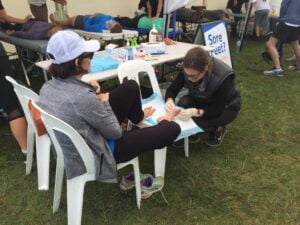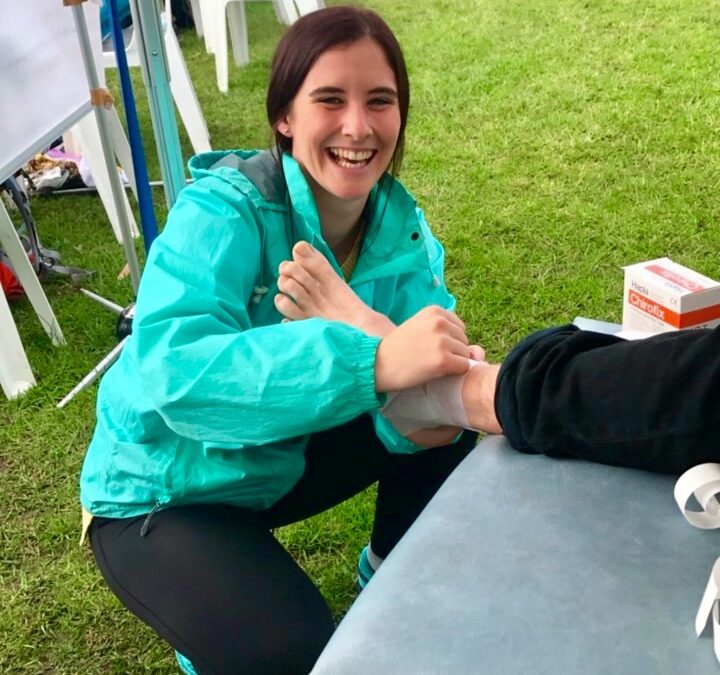Blisters – how do we treat?
Blisters are a big reason why people pull out of a run or walk and can make an event experience extremely unpleasant.
We want to help you prevent blisters and give you the tools to manage them if they do occur.
Treatment
So you have a blister – that’s okay! The aim of treatment is to keep the skin sterile and free from infection. Only ever “pop” or lance a blister if you have a sterile environment and dressings.
The best way to lance a blister is with a scalpel blade and is best done by a professional. In most cases, you will feel relief once the blister is lanced as there will not be excessive pressure on the skin. Do not pop your blister if you have an unsterile object eg) needle.
| Type | Description | Treatment |
| Hot Spot | Red and sensitive area
“Pre blister” |
1. Taping
2. Sock change 3. Re-lace shoes |
| Fluid filled blister (roof intact) | Tight area of superficial skin filled with fluid | 1. Lance (if possible)
2. Leave roof overlying (do not remove) 3. Dress with antiseptic (eg. betadine) and island dressing (melolin and hypafix) 4. Offload with padding if needed |
| Blister (Roof torn) | Skin is broken
Underlying sensitive skin Most likely blister has “popped” itself due to friction |
1. Flush with sterile saline or clean water
2. Leave roof intact as much as possible 2. Dress with antiseptic (betadine) and island dressing 3. Offload if possible |
| Blister (Deroofed) | Deeper layer of skin exposed
Fragile and sensitive Risk of damage to deeper layers if not protected |
1. Flush with sterile saline or clean water
2. Dress with “hydrocolloid” dressing (eg. bandaid advanced healing) 3. Offload if possible |
| Blister underneath nails (Subungual) | “Black toenails”
Most commonly a blood blister underneath nail plate |
Protect and offload if during event
Needs to be treated by a Podiatrist if painful We will be able to release the blood underneath the nail safely which will provide relief and dress appropriately Nail may fall off after a few weeks |

Top Tips
- Be prepared with dressings in a ziplock bag. I would suggest carrying yourself as you may develop pain before the next checkpoint on event day.
- Know your blister prone areas and address the causative factors during training
- If unsure of how to treat your blister during the event, there are often medical staff or Podiatrists who can assist
- Post event, see a Podiatrist if you are unsure of how to treat or blister area is still painful
Maddie McMahon
Podiatrist
